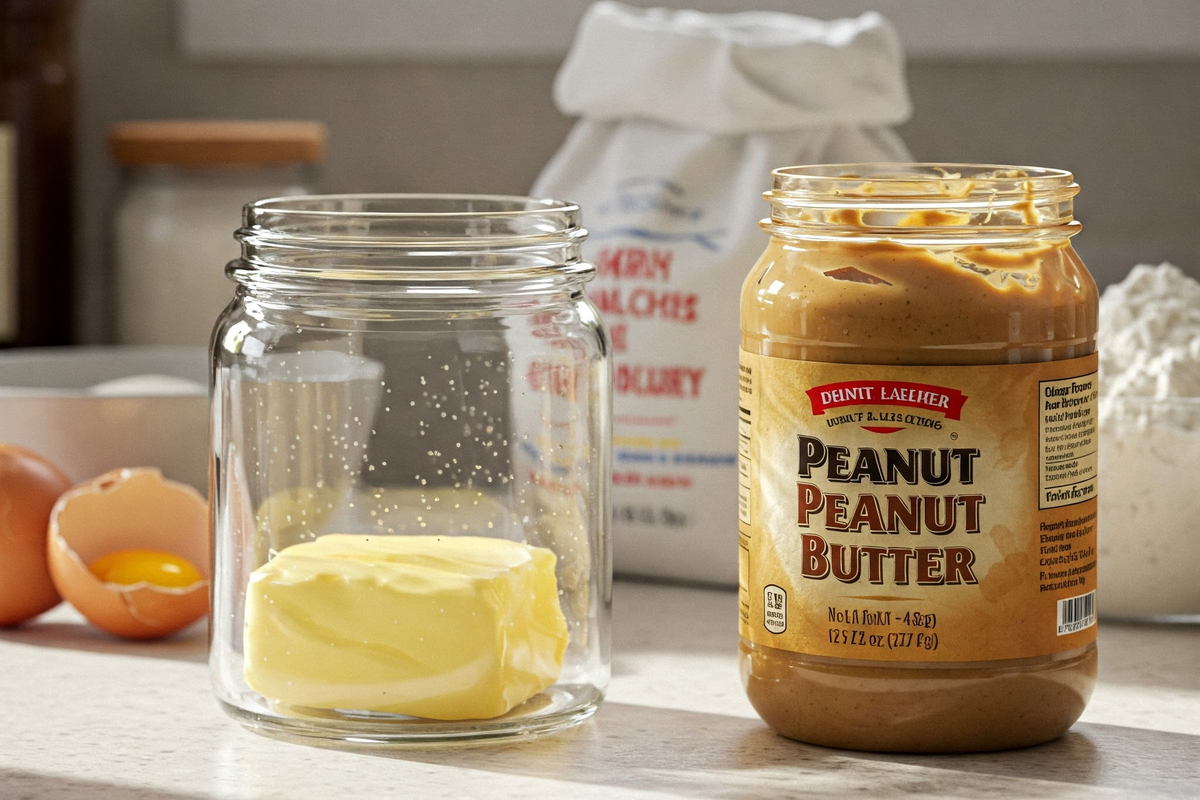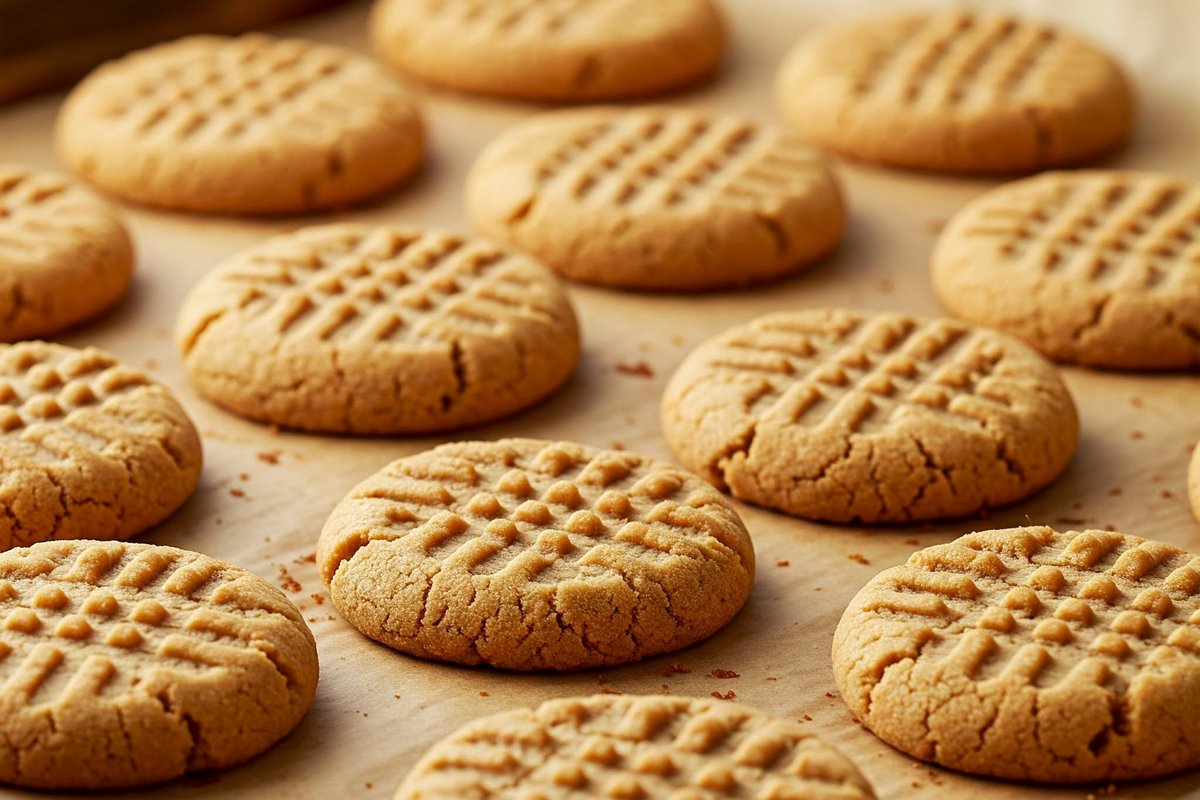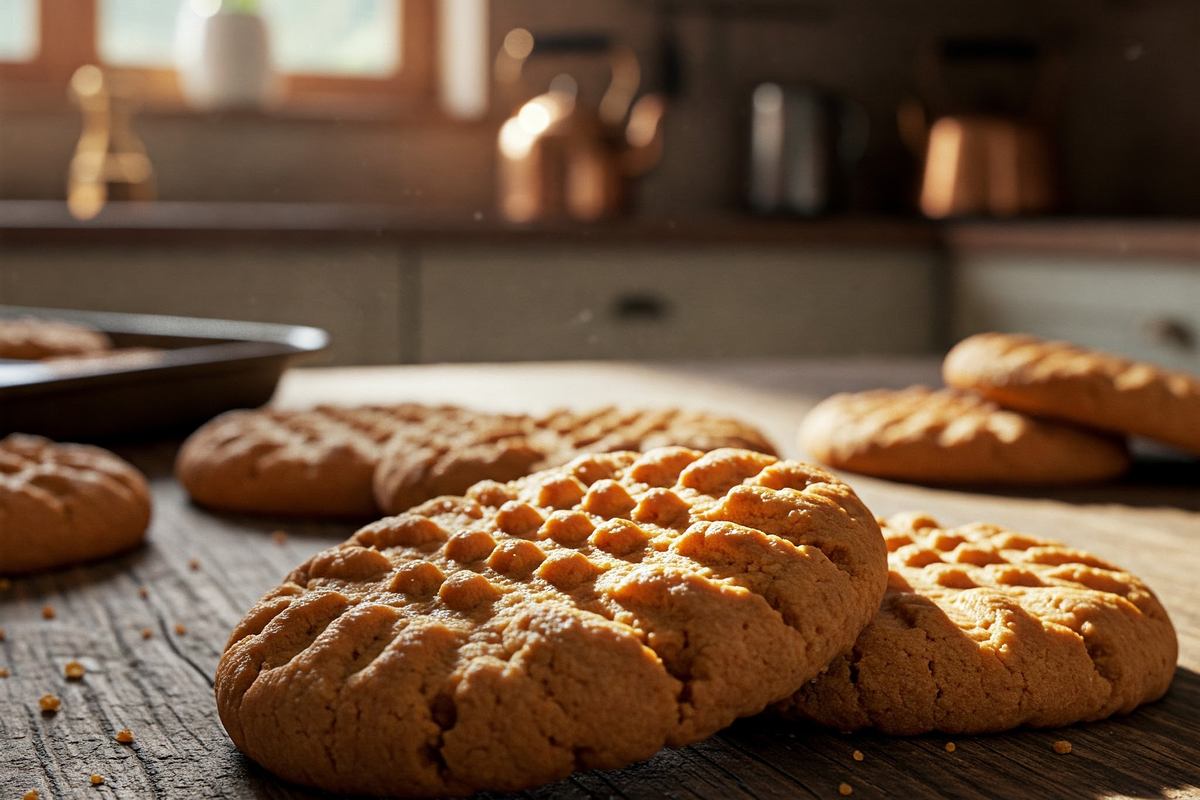Have you ever run out of butter in the middle of a cookie recipe and wondered, Can I replace butter with peanut butter in cookies? It’s a question many home bakers face, especially when they want a unique twist or a healthier option. Substituting peanut butter for butter can significantly change the texture, taste, and nutritional profile of your cookies. In this article, we’ll break down everything you need to know—from how peanut butter compares to butter to practical tips for making the swap successfully. Let’s dig in!
Understanding the Role of Butter in Cookie Baking
Why Butter is Essential in Traditional Cookies
Butter plays a crucial role in cookie recipes, doing more than just adding flavor. Its fat content provides moisture, giving cookies a tender and chewy texture. During baking, butter melts and creates steam, which helps leaven the dough and results in light, airy cookies. Moreover, the rich, creamy flavor of butter enhances the sweetness of cookies, creating that signature buttery taste we all crave.
Butter also affects how cookies spread. As it melts, the fat disperses throughout the dough, causing the cookies to flatten out. Without enough butter or a proper alternative, you might end up with dense, puffy cookies that lack that perfect crisp edge and chewy center.
Butter’s Impact on Cookie Texture and Flavor
The texture and flavor of cookies are directly tied to the type and amount of fat used. Cookies made with butter tend to have a delicate crumb and a melt-in-your-mouth feel. Butter adds depth to the cookie’s overall taste because of its ability to caramelize sugars during baking, creating subtle nutty and toasty notes.
Changing the type of fat—like substituting peanut butter—can introduce new flavors and modify the texture. Peanut butter, for example, adds a denser, creamier texture and its distinct nutty taste can overpower the sweetness if not balanced correctly. In the next section, we’ll dive into peanut butter’s characteristics and how it compares to butter in baking.
Peanut Butter as a Baking Ingredient
Nutritional Composition of Peanut Butter
Peanut butter is packed with nutrients, including healthy fats, protein, and essential vitamins like vitamin E and magnesium. Unlike butter, which primarily contains saturated fats, peanut butter offers a mix of monounsaturated fats that are beneficial for heart health. This makes it an appealing alternative for bakers who want to increase the protein content in cookies or reduce saturated fat intake.
That said, the high-fat content of peanut butter is still significant, so it’s important to consider portion control when substituting it for butter. Additionally, natural peanut butter is less processed, which can provide a richer, nutty flavor while supporting cleaner eating habits.
Common Uses of Peanut Butter in Baking
Peanut butter shines in baking, especially in cookie recipes. Its creamy texture blends easily with other ingredients, creating moist, dense cookies. Recipes like peanut butter blossoms or peanut butter chocolate chip cookies rely heavily on its rich, earthy taste. Bakers can use peanut butter to add depth and a chewy texture to recipes, but its strong flavor can overshadow other ingredients if not balanced carefully.
For tips on how to make a delicious peanut butter-based dessert, you might enjoy the guide to chocolate cookies with peanut butter chips on Roomy Recipes!
Peanut Butter vs. Butter – Key Differences
How Peanut Butter Alters Cookie Texture
Swapping butter for peanut butter in cookies can result in a different texture. Because peanut butter contains less water and a higher protein content than butter, cookies often turn out denser and more crumbly. While butter helps create a light, airy texture by producing steam as it melts, peanut butter doesn’t provide the same lift, which can make cookies spread less during baking.
Peanut butter also increases the chewiness factor. If you prefer cookies that are softer in the middle but firm on the outside, adjusting other ingredients like baking soda or egg may help achieve a better balance.
Differences in Moisture and Fat Content
Butter is approximately 80% fat and 20% water, while peanut butter is nearly all fat with minimal moisture. This difference affects the moisture balance in cookie dough, potentially leading to dry or crumbly cookies if no other liquid ingredients are added. To counteract this, bakers may need to tweak recipes by slightly increasing milk, egg, or another moisture source. Understanding these key distinctions is crucial if you’re wondering, Can I replace butter with peanut butter in cookies?.
Benefits of Replacing Butter with Peanut Butter

Health Benefits and Nutritional Boost
If you’re looking to boost the nutritional value of your cookies, swapping butter for peanut butter might be a smart move. Peanut butter is rich in protein, fiber, and healthy fats, making it a better choice for anyone aiming to maintain balanced blood sugar levels or increase their protein intake. Plus, the monounsaturated fats in peanut butter promote heart health, whereas butter contains more saturated fats, which are linked to higher cholesterol levels.
Peanut butter also adds essential vitamins and minerals to your cookies, like magnesium and vitamin B6. This can make the occasional treat feel a little less guilty.
Cost and Availability Factors
In some regions, butter can be pricey or hard to find. Peanut butter, on the other hand, is often a more affordable and shelf-stable alternative. Additionally, peanut butter’s long shelf life makes it a convenient pantry staple, reducing the need for frequent grocery runs.
How to Substitute Peanut Butter for Butter
Step-by-Step Guide to Making the Switch
Wondering, Can I replace butter with peanut butter in cookies without ruining the recipe? The good news is, yes! Follow these simple steps to ensure your cookies turn out great:
- Measure accurately: For most recipes, you can substitute peanut butter in a 1:1 ratio with butter. For example, if your recipe calls for 1 cup of butter, use 1 cup of peanut butter.
- Adjust other ingredients: Because peanut butter is less watery than butter, adding an extra tablespoon of milk or water can help prevent your cookies from becoming dry.
- Mix properly: Peanut butter is thicker and stickier than butter, so be sure to thoroughly mix your dough to avoid uneven texture.
Ratio and Measurement Adjustments for Recipes
When making this substitution, it’s essential to keep ratios in check to maintain cookie structure and taste. Since peanut butter is denser, your dough might feel thicker and less pliable than usual. Increasing liquid ingredients, like eggs or milk, by small increments can restore moisture balance.
Also, consider reducing sugar slightly, as peanut butter naturally adds sweetness. If you’re aiming for a classic cookie with a hint of nutty flavor, these adjustments will help maintain consistency without overpowering the cookie’s sweetness.
For more tips on perfecting cookie recipes, check out Roomy Recipes’ chocolate cookies with peanut butter chips guide!
Flavor and Texture Adjustments When Using Peanut Butter
Modifying Sugar and Salt Levels
When you replace butter with peanut butter, it’s important to tweak the sugar and salt levels in your cookie dough. Peanut butter has a rich, nutty taste that can sometimes overpower the sweetness. To balance the flavor, consider cutting back on sugar by about 10%. On the flip side, many peanut butter brands contain added salt, so you might also want to reduce or omit any extra salt in your recipe.
Balancing these ingredients ensures your cookies maintain a harmonious mix of sweet and savory without overwhelming your taste buds.
Additional Ingredients to Balance Texture
Peanut butter can make cookies dense and crumbly, but there are simple tricks to avoid this. Adding extra egg yolk, which acts as a binder, can help the cookies hold together better. You might also want to increase moisture by incorporating a tablespoon of milk, yogurt, or melted coconut oil.
Using baking powder or baking soda strategically can also enhance the rise and texture, allowing your cookies to retain a tender center with crispy edges. These small changes go a long way in making sure your cookies don’t feel too dry.
Recipes and Variations for Peanut Butter Cookies

Classic Peanut Butter Cookies Recipe
If you’re wondering, Can I replace butter with peanut butter in cookies? the answer is a resounding yes, especially with classic peanut butter cookies. Here’s a simple recipe to try:
- Ingredients:
- 1 cup peanut butter
- 1 cup sugar
- 1 large egg
- 1 teaspoon vanilla extract
- Instructions:
- Preheat your oven to 350°F (175°C).
- Mix all ingredients in a bowl until fully combined.
- Roll the dough into balls and flatten them with a fork to create the signature crisscross pattern.
- Bake for 10-12 minutes or until golden brown. Let cool before serving.
Creative Variations and Flavor Enhancements
Want to experiment? Try adding chocolate chips, crushed pretzels, or a swirl of Nutella to the dough. For a healthier twist, you could use whole wheat flour and natural peanut butter. Another option is to create peanut butter sandwich cookies by filling them with a layer of jam or marshmallow cream.
If you’re in the mood for something extra special, peanut butter and chocolate chip combinations can give your cookies an irresistible flavor contrast. This combination offers a delightful mix of sweet, salty, and rich textures that’s sure to please everyone.
Pros and Cons of Substituting Peanut Butter
Advantages for Health-Conscious Bakers
Replacing butter with peanut butter offers several health benefits. Peanut butter is rich in protein, fiber, and healthy fats, which makes cookies more filling and nutrient-dense. Additionally, it contains essential vitamins and minerals like magnesium and vitamin B6. For those aiming to cut back on saturated fat, this substitution is an excellent option for creating a healthier cookie.
Peanut butter’s long shelf life and affordability are also appealing, particularly for home bakers who may want to reduce grocery costs.
Potential Drawbacks in Recipe Adaptation
Despite the benefits, there are some challenges. One common issue is that peanut butter’s strong flavor can overwhelm other ingredients, such as chocolate chips or spices. Additionally, cookies made with peanut butter often turn out denser and less airy than butter-based versions. This texture change may not appeal to those who prefer classic, buttery cookies.
If you’ve ever asked yourself, Can I replace butter with peanut butter in cookies?, these pros and cons highlight the trade-offs to consider.
Common Mistakes and How to Avoid Them
Overmixing the Dough with Peanut Butter
Overmixing is a frequent mistake when using peanut butter in place of butter. Peanut butter has a thicker, more viscous consistency, which can lead to tougher cookies if you overwork the dough. Mix just until ingredients are combined to prevent this. Be gentle—less mixing helps maintain a soft, chewy texture.
Issues with Baking Time and Temperature
Another mistake involves incorrect baking time. Peanut butter cookies tend to bake faster than butter-based cookies because of their lower water content. If left too long in the oven, they can become dry and crumbly. To avoid this, keep a close eye on your cookies and bake them at a slightly lower temperature—about 325°F (163°C)—to ensure even baking.
By paying attention to these common errors, you can master your peanut butter cookie recipes and answer confidently when asked, Can I replace butter with peanut butter in cookies?

